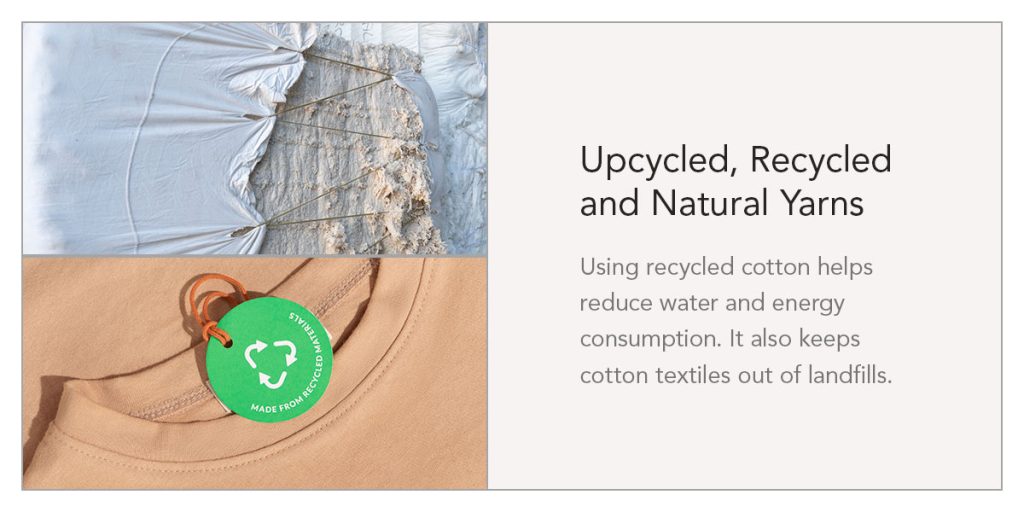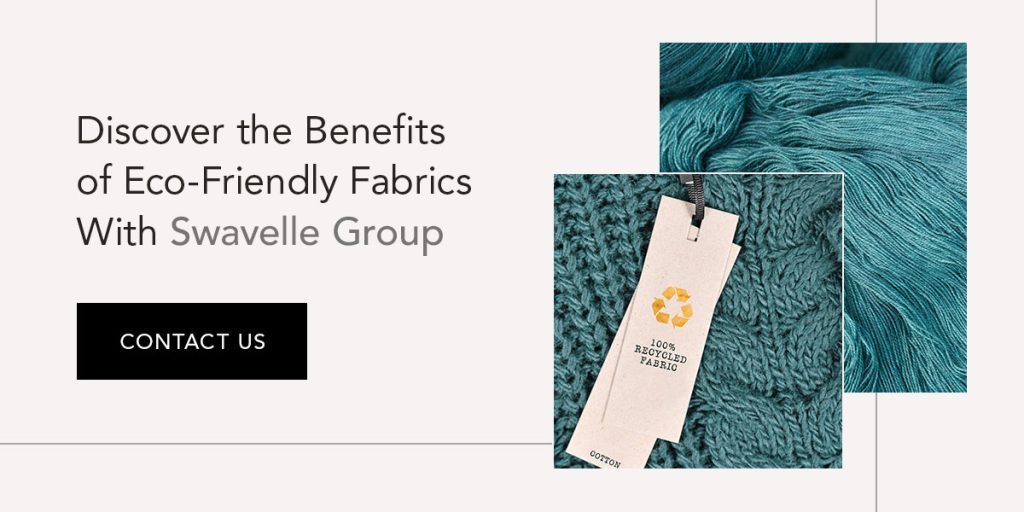The fashion and textile markets are major contributors to environmental pollution and landfill waste. Between extensive supply chains and energy-intensive manufacturing techniques, the textile industry produces up to 10% of global carbon emissions — more than the shipping and aviation sectors combined.
Textile manufacturers can promote a healthier planet by pursuing eco-conscious production routes. Sustainable fabrics are a prime example. These products come from materials with a minimal environmental impact throughout their life cycle. Learn what defines a sustainable fabric in this guide.
Sustainable fabrics come from environmentally friendly resources, such as upcycled and recycled materials and sustainably grown fibers. Sustainability doesn’t exclusively factor in how eco-friendly the material itself is. It also considers:
Sustainable textiles are biodegradable and/or recyclable. They aim to reduce landfill buildup and other negative effects on the planet. These fabrics typically come from renewable resources that can be replenished without posing environmental risks. They are also manufactured to provide strength and longevity, giving them a smaller carbon footprint over their life cycle.
Let’s look at some examples of sustainable fabrics and how they benefit the environment.
Originally, manufacturers had to wash dyed yarns and fabrics in hot water repeatedly. This process wastes significant water and energy.
Solution dyeing adds pigment to liquid polymers before the fiber is created. Because the manufacturer makes the yarn in a specific color — as opposed to producing and then coloring it — the solution-dyeing process confines the color within the yarn.
Solution dyeing preserves water and electricity since it doesn’t require rinsing, liquid dyeing or machine drying. Solution-dyed fabrics also resist fading, microbes and staining, giving them a longer life span.
Some textile manufacturers use per- and poly-fluoroalkyl substances (PFAS) in their products to resist staining, heat and water. These “forever chemicals” are not biodegradable. As a result, they can pollute soil and natural water sources.
PFAS chemicals are also connected with adverse health effects, like cancer, high blood pressure and hormonal imbalance. Manufacturers who prioritize sustainable production should limit their use of PFAS and other chemicals that can damage the environment and human health.
Initially, consumers primarily associated sustainability with natural fibers like cotton, bamboo, wool and silk. In many ways, these fibers are more sustainable than synthetic fibers — like polyester, acrylic and nylon — since they are biodegradable. However, they are still linked with some environmental concerns.
For example, cotton often relies on large amounts of water and pesticides for growth. In that case, recycled polyester fiber would be eco-friendlier than cotton.
Using recycled cotton helps reduce water and energy consumption. It also keeps cotton textiles out of landfills. Additionally, using recycled plastics and biodegradable polymers for synthetic yarns contributes to greener manufacturing initiatives.
Upcycled materials also promote more sustainable production methods. Upcycling creates a new product from waste in its current state. It minimizes the number of products and materials that enter the landfill. It also reduces the use of raw materials and natural resources like fuel and water.

Though sustainable clothing and textiles can cost more to produce, their value is well worth the added expense. Here are some benefits of sustainable fabric.
Sustainable fibers — such as solution-dyed fabrics — require less water and energy during production. Therefore, they help preserve our natural resources and reduce our carbon footprint. Manufacturers can also lower their monthly utility bills by using less water and electricity, saving money in the long run.
Landfills have various adverse effects on the environment. They can contaminate groundwater and soil. They can also emit toxic gases like methane and carbon dioxide. Sustainable fabrics reduce the consumption of raw materials and promote more recycled and upcycled products. In turn, they decrease the number of materials occupying our nation’s landfills.
Fast fashion focuses on producing large product quantities as quickly as possible. Conversely, sustainable fabrics emphasize quality over quantity.
These products use more durable and comfortable materials that offer years of performance. As a result, consumers discard fewer textiles into landfills. Plus, sustainable fabrics use fewer harmful chemicals that can irritate the skin.
Sustainable fibers cut down on PFAS and other harmful chemicals. This promotes a safer workplace for employees, a better environment and a healthier community.
According to a study by McKinsey, 67% of consumers prioritize using sustainable materials in the products they purchase. Furthermore, 63% factor a brand’s promotion of sustainability into their buying decisions.
By opting for more sustainable manufacturing practices and products, you can appeal to your eco-conscious customers and build a greener reputation. Consumers want to buy from brands that care about protecting the environment as much as they do.
As more consumers prioritize sustainable shopping habits, eco-friendly fashion is becoming more popular, and brands are recognizing the value of sustainable manufacturing.
Many fashion executives believe sustainability is crucial to the industry’s success. This breakthrough has spurred them to shift their production materials and methods. Considering the positive outlook of sustainable fashion, providing your customers with earth-conscious products is more important than ever.
Swavelle Group strives to protect the environment through sustainable fabrics and manufacturing methods. Our recycling, upcycling and repurposing techniques help maintain the integrity of our planet. Here are some ways our solutions promote sustainable initiatives:
Supply your customers with quality textiles that preserve our earth and add style to their space. Contact Swavelle Group to learn more about our sustainable products and manufacturing processes.
